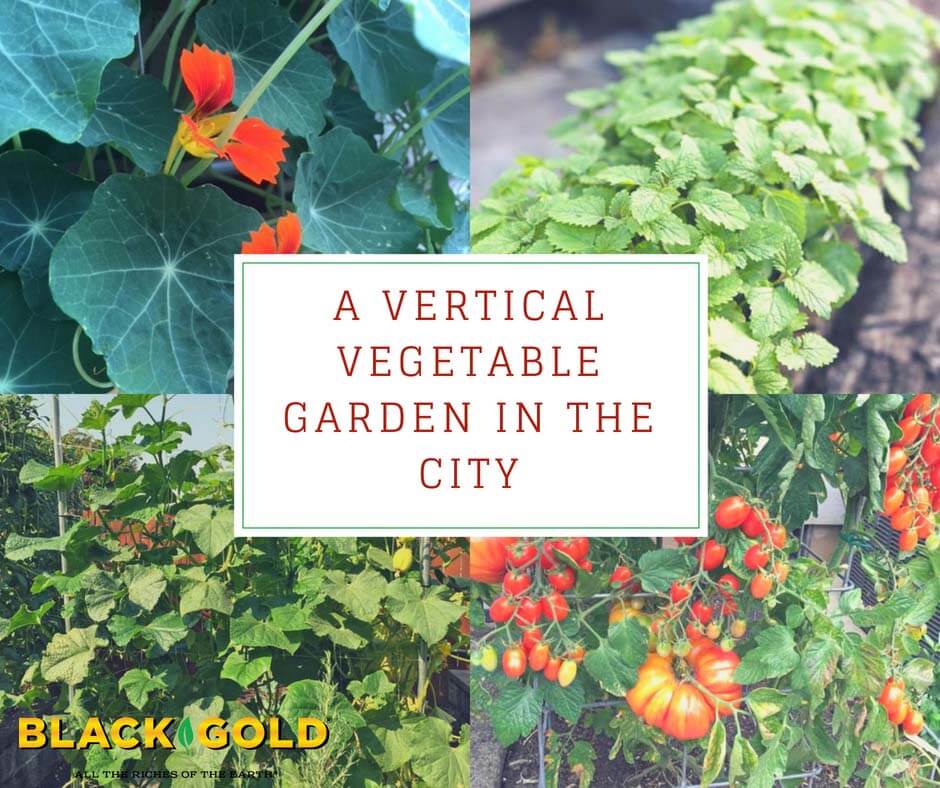Salem, Oregon gardener Harry Olson has taken vertical gardening to new heights, (literally). Harry’s home is on a small city lot and because of space constraints and shade issues from neighboring trees, Harry has, out of necessity, created a vertical garden. This has challenged him to creatively experiment and find innovative ways to maintain a productive edible garden. Many of his methods could easily be modified for gardeners with even less space (a sunny balcony, deck or patio).
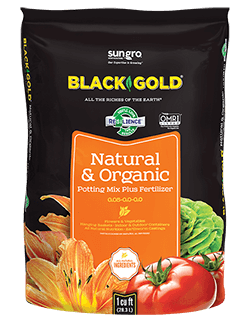 Start with Good Soil
Start with Good Soil
Harry starts with good soil, one of the most essential components for any garden. Quality soil is critical for good production, especially where space and light are limited. For edible gardening in small spaces, Black Gold Natural & Organic Potting Mix is great for container growing and Black Gold Garden Compost Blend is a super amendment for in-ground gardening. Both products are OMRI Listed for organic gardening and will naturally boost productivity and yields.
Grow Vegetables Creatively
Tomatoes
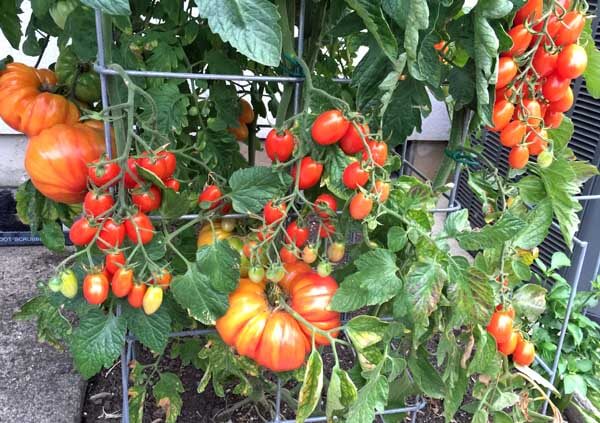
Grafted tomatoes are a favorite of Harry’s because in one container it is possible to have three different varieties. He uses a ‘triple graft’, and one that Harry successfully grew last year was a combination of ‘Sweetheart’ (red, heart-shaped, salad type), ‘Blush’ (golden-orange grape type), and ‘Virginia Sweet’ (red-gold beefsteak type) tomatoes. Harry often extends an invitation to different garden clubs and societies to visit his garden, and he told me that this triple-grafted tomato was the most photographed plant in his garden.
Vining Vegetables
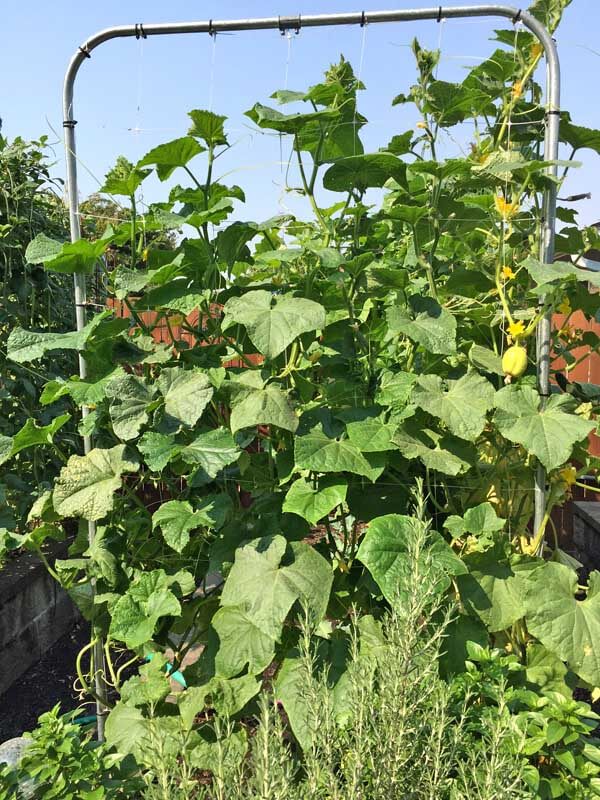
Cucumbers and squash can easily be grown vertically with good support. These substantial vines climb by tendrils, so it is necessary to provide a strong trellis of metal or wood with a wire or string lattice for the tendrils climb. Harry’s simple, compact structure was constructed from a single metal frame with a lattice of strong, taught strings. To further maximize space, he planted the base of the trellis with rosemary, basil, and other sun-loving herbs.
Vines can also be container-grown, if the container is large enough. Harry chose to grow is cantaloupe vertically in a large container fitted with a trellis. To support the heavy fruit and save the vine from breakage, he used pantyhose trusses to hold the fruit. What a good solution!
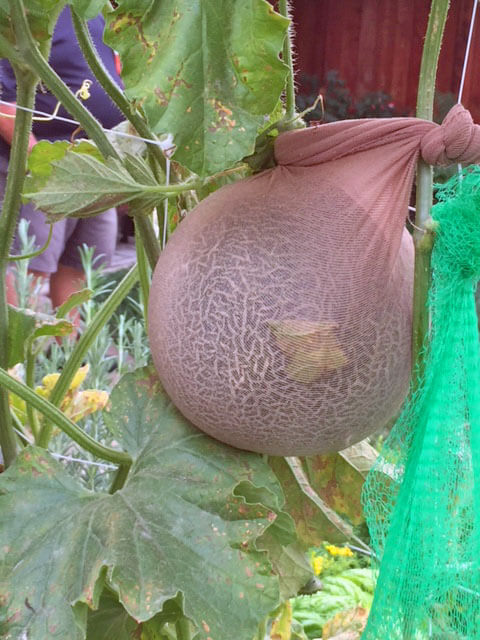
Harry also relies on pole beans, another easily grown vining crop, that are light and easy to trellis. These summer producers thrive in the heat and start to decline by fall. For a fall crop, he plants vining peas in late summer. They are easy to grow from seed, thrive in the cooler fall weather and often continue producing, even after the first light frost.
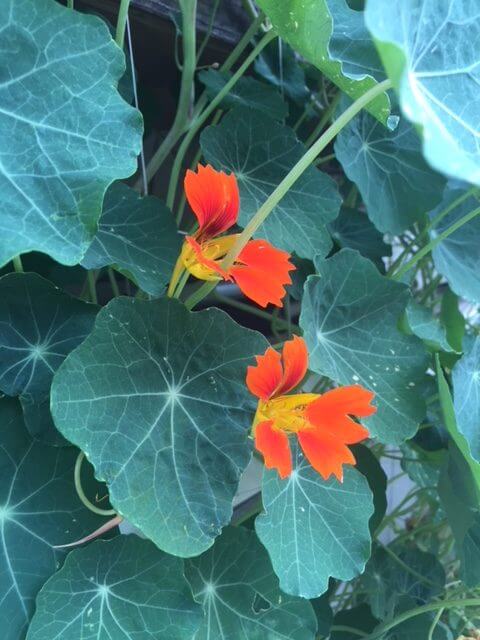
Vining edible flowers also have a place in Harry’s city plot. With adequate support, his vining nasturtiums will often reach six feet. An advantage with nasturtiums is that they do not require full sun as compared to the other plants mentioned here. Nasturtiums provide beautiful flowers and all parts of the plant can be eaten. The leaves and stems will give salad a little ‘spice’ and the flowers make a beautiful edible garnish.
Fruit Trees
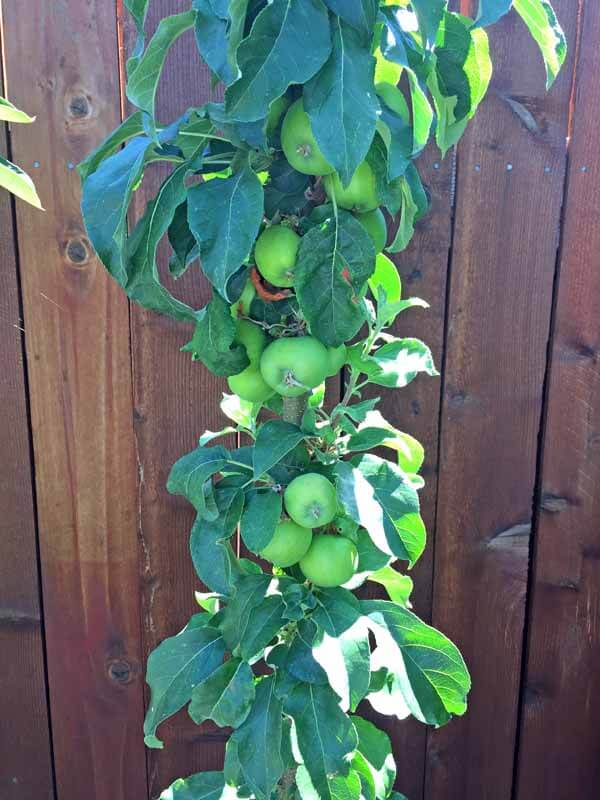
Even dwarf fruit trees can be grown in containers. Harry chose columnar apples planted along his fence. These are a good choice because in the last few years columnar apples have become readily available in garden centers. These trees have been developed to set fruit without having another tree for cross pollination, and the columnar structure produces short branches close to the single trunk to maximize space, airflow, and sun exposure. Imagine having your own homegrown apples on your deck or patio!
Growing a vertical garden is probably much easier than one might imagine. Even with the limited space of a balcony, deck or patio, it is possible to have fresh produce throughout the summer with some plants continuing to produce into the fall. Do some experimenting and you might be pleasantly surprised with the results.


